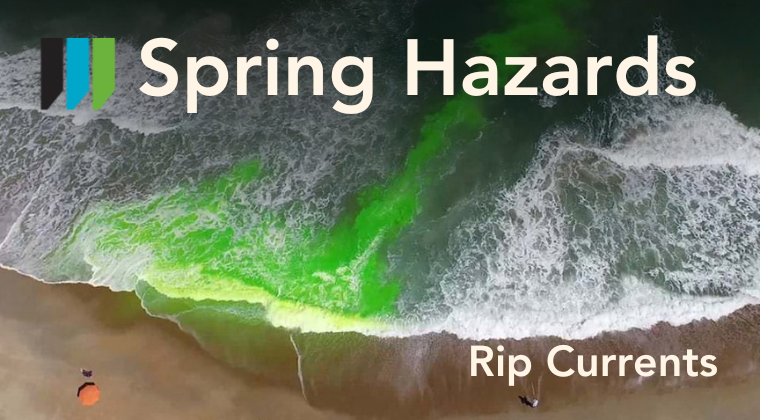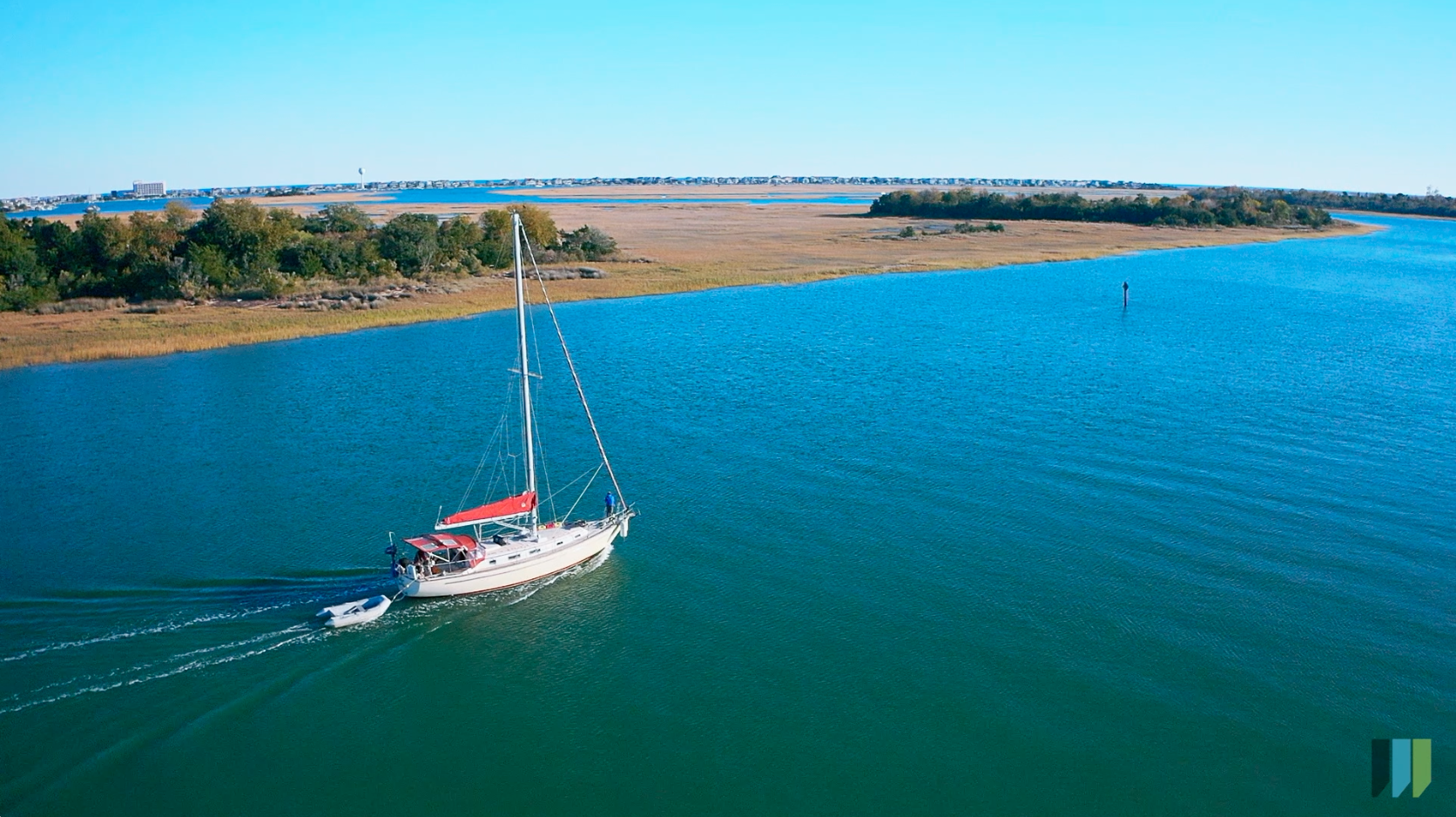Spring Hazards - Rip Currents

NOAA’s National Weather Service (NWS) is committed to protecting human life and property, and spring hazards can put both at risk. That’s why NWS releases its spring safety campaign each year on March 1, the start of meteorological spring.
![]() On e of the two main concerns are rip currents (We will cover tornados next week). As air and sea temperatures rise, beachgoers are once again drawn to the ocean to enjoy the many recreational activities enjoyed by so many. It's easy to get overly excited and forget to be aware of your surroundings, as well as how quickly things can go sideways...or out to sea!
On e of the two main concerns are rip currents (We will cover tornados next week). As air and sea temperatures rise, beachgoers are once again drawn to the ocean to enjoy the many recreational activities enjoyed by so many. It's easy to get overly excited and forget to be aware of your surroundings, as well as how quickly things can go sideways...or out to sea!
RIP CURRENTS
Rip currents are channelized currents of water flowing away from shore at surf beaches. Typically, they form at breaks in sandbars, and also near structures, such as jetties and piers, as well as cliffs that jut into the water. Rip currents are common and can be found on most surf beaches, including the Great Lakes and Gulf of Mexico. Take a few minutes to learn more.
Before you go:
- Check the National Weather Service Surf Zone Forecast: If you're considering going to the beach, check the official surf zone forecasts and/or beach advisories and closings link. before you start packing up. If you are visiting a beach you're not familiar with, ask your hotel or rental agency for local surf/weather forecast resources.
- Know How to Swim BEFORE You Venture In: The controlled environment of a swimming pool is far different than swimming at a beach with constantly changing ocean and weather conditions. Breaking waves, wind, and strong currents are extremely powerful, and people often take them for granted. Fight wind driven or tide driven currents and waves can be exhausting and life threatening if you are not familiar with how to deal with them. You should be a strong swimmer before you go into the ocean, Great Lakes, or Gulf of Mexico and have a working knowledge of how to escape a rip current. Many swimming programs now offer lessons in how to escape a rip current. According to the USLA, learning how to swim is the best defense against drowning.
- Know What the Warning Flags Mean: Read the beach safety signs every time you walk onto a beach. Look for beach warning flags, often posted on or near a lifeguard's stand and speak to the lifguards to assess the conditions. They are often very helpful and will be more than happy to keep you out of harm's way and prevent an incident where they then have to go save you or one of your family members. Common flag colors include: green - water conditions are safe; yellow - take caution with rougher conditions; red - do not enter the water, dangerous conditions; purple - dangerous marine life present; checkered - indicate boundaries where lifeguards are keeping watch. Check with local lifeguards, because warning flags aren't used in all areas and their meaning can vary from area to area. Check this link from U.S. Lifesaving Associaiton for info on the beach you are visiting.

How to Survive a Rip Current:
- Don't panic! Relax and float. Rip currents don't pull you under. The water is deeper, you can't touch the bottom, and it can feel like your feet are being swept out from under you.
- A rip current is a natural treadmill that travels an average speed of 1-2 feet per second, but has been measured as fast as 8 feet per second -- faster than an Olympic swimmer. Trying to swim against a rip current uses a lot of energy and oxygen and you will never beat it. Instead, go with it and imagine you're in a lazy river...enjoy the ride.
- Do NOT try to swim directly into to shore...yet! A rip current's natural flow will push you out and then over behind the breaking waves. Swim parallel to the shoreline until you are no longer in the current's grip. Swim in when you are naturally being being pushed again into the breaking waves and bodysurf your way back to safety on the shore.
- If you feel you can't reach shore, relax, face the shore, and call or wave for help. Remember: If in doubt, don't go out!
- If at all possible, only swim at beaches with lifeguards.
- If you choose to swim on beaches without a lifeguard, never swim alone. Bring a friend and have that person take a cell phone so that person can call 911 for help. Having a floatation device like a boogieboard or surf mat can also be used to stay afloat.

For more info check out the NWS Spring Safety Campaign.
If you have questions about your personal safety or insuring your risks with boating, beaching, etc. please reach out to us insurance@wellsins.com or visit our website www.wellsins.com/marine


